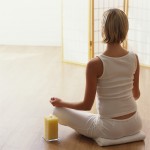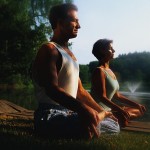This article is sponsored by Polka Dot Pond Shop. SAVE THE ENVIRONMENT! Let’s face it, plastic water bottles are out! A high-quality reusable water bottle is a must-have for everyone who’s on the go. Glass water bottles also make great economical gifts for those near and dear to you. Why not supply your entire family with colorful, cool, and environmentally-friendly silicone sleeved and 100% non-toxic water bottles, all made in the USA. https://www.polkadotpond.ca/Storefront/main_pages/browseProd.php?pid=981#.UKqbC2Eg7Y Because the bottles are made from glass with all materials being FDA approved, there’s no chemical leaching and no metallic taste. And as a bonus, both the bottle and sleeve can be put in the dishwasher together. All items are BPA, phthalate, PVC, and polycarbonate free. Do all of your holiday shopping at a well-established and trusted online store, Polka Dot Pond Shop! https://www.polkadotpond.ca/
Got 12 minutes? 3 Simple Strategies for Stress-Free Surrender!
Written by Jessica Matthews
Busy day at work? Hectic holiday season? A growing to-do list? Whatever the reason might be, in this fast-paced world it’s not uncommon to find ourselves feeling stressed from time to time, especially as the end of the year draws near. These three simple strategies for stress relief, which when done together take just 12 minutes to complete, can help you to truly relax and unwind at the end of a long day.
Yogic breathwork in child’s pose (Ujjayi Pranayama in Balasana)- Numerous scientific studies have shown that pranayama, the practice of breath control, helps to increase relaxation, decrease feelings of anxiety, improve mental focus and enhance overall psychological well-being. Ujjayi breathing, a type of pranayama in which inhalation and exhalations are done through the nose, is a breath that is both relaxing and energizing. This diaphragmatic breath has been shown to increase oxygen consumption, as it is designed to be both a long and smooth breath in which air is guided gently in and out of the body through the nose without force, creating a soothing sound, almost like the sound of distance ocean waves. Pair this breath with child’s pose, a resting posture that helps to release tension in the back while also relieving fatigue and stress, and spend about two minutes quieting the mind and steading the breath while enjoying a few moments of surrender.
Legs up the wall pose (Viparita Karani)- Borrowing from restorative yoga, this posture helps to release tension from the lower extremities and reduce swelling in the legs and feet while also calming the mind and decreasing feelings of anxiety and stress. With your legs extended up the wall, use folded blankets or a bolster to help support the lower back as you come to stillness for five blissful minutes.
Seated meditation (Mantra Visualization in Anjali Mudra)- Clearing your mind after a long day can seem like quite the challenge, especially if you’re new to meditation, but by practicing anjali mudra, a comfortable seated posture in which the palms are pressed together at heart center with both thumbs lightly touching the sternum and the head slightly bowed forward, in time entering that meditative state of awareness will start to become much easier. Couple this stress-relieving asana with a mantra visualization in which you select a word or phrase that you repeat silently to yourself, allowing it’s meaning to radiate through your body, and in just five quiet contemplative minutes it can help you to quiet your mind and truly become grounded, present and fully attuned in the here in now.
This article is written by Jessica Matthews, MS, E-RYT, is an exercise physiologist, yoga teacher, group fitness instructor, personal trainer, adjunct professor, blogger and fitness personality. Jessica strives to open minds, ignite passion and inspire the world to health and fitness through purposeful movement, quality nutrition and kind words. She has been featured as a fitness expert on CNN and has been quoted in numerous publications including Shape, Self, Oxygen and Oprah.com. For more health and fitness information, follow Jessica at www.twitter.com/fitexpertjess
 Subscribe
Subscribe
